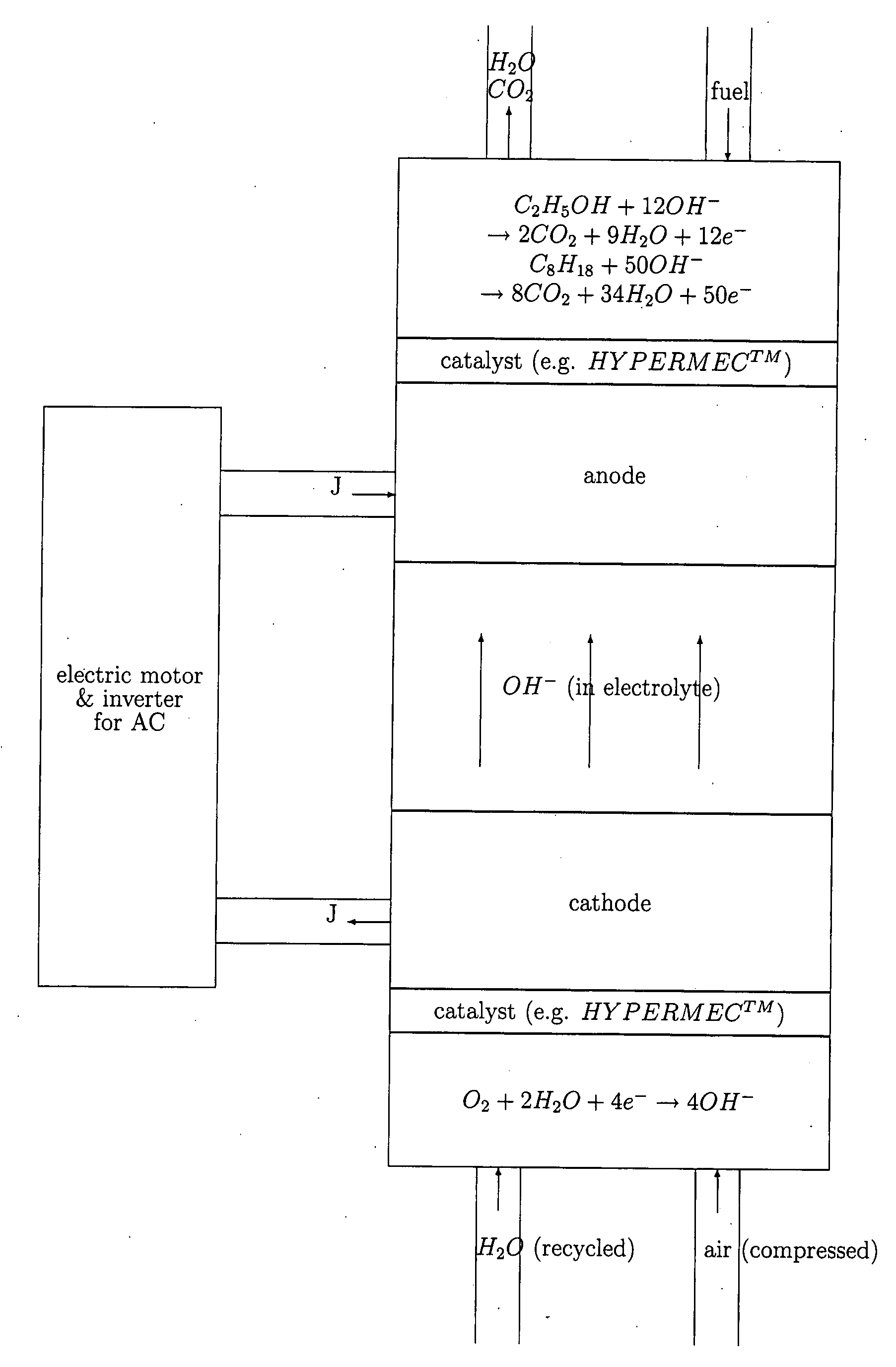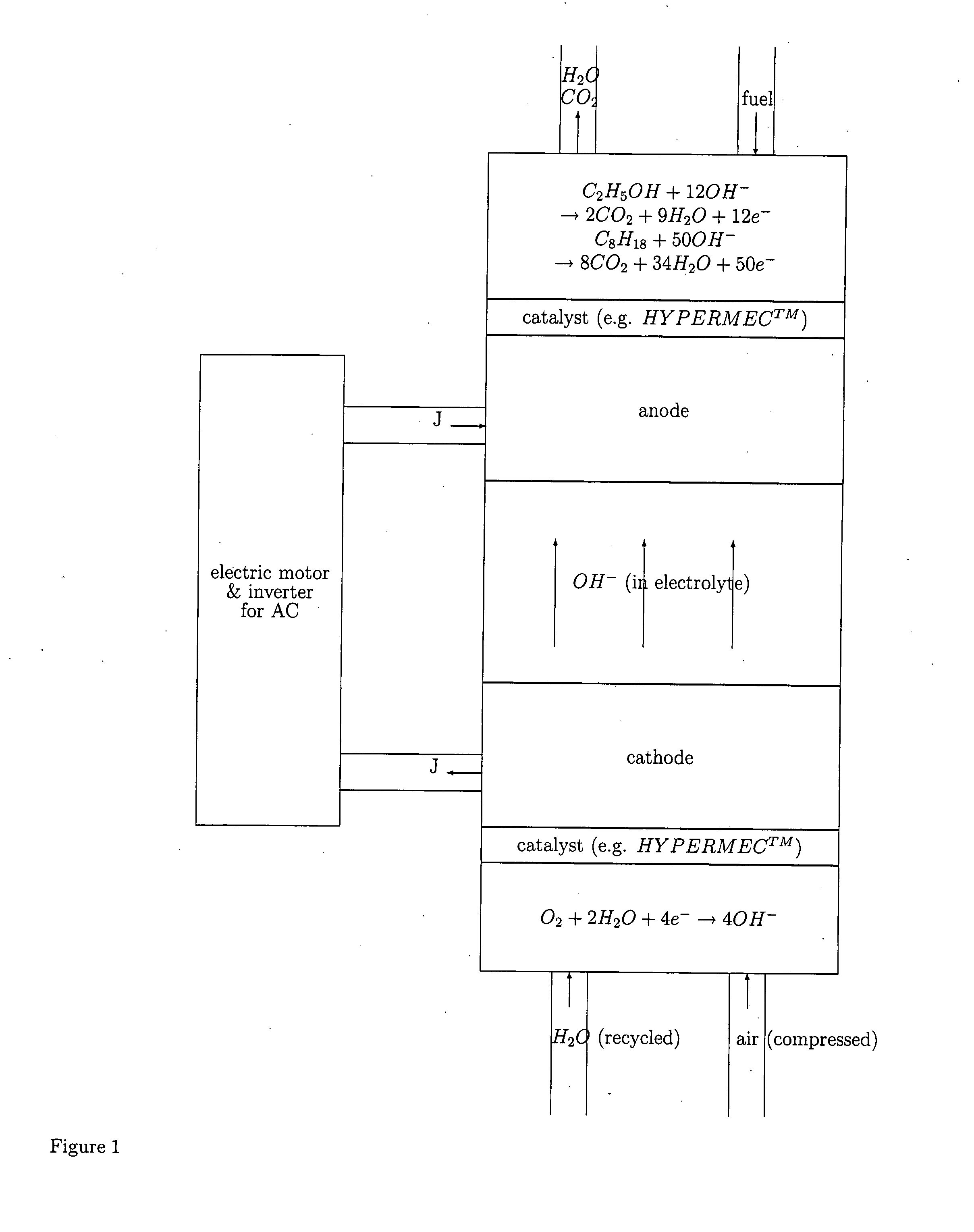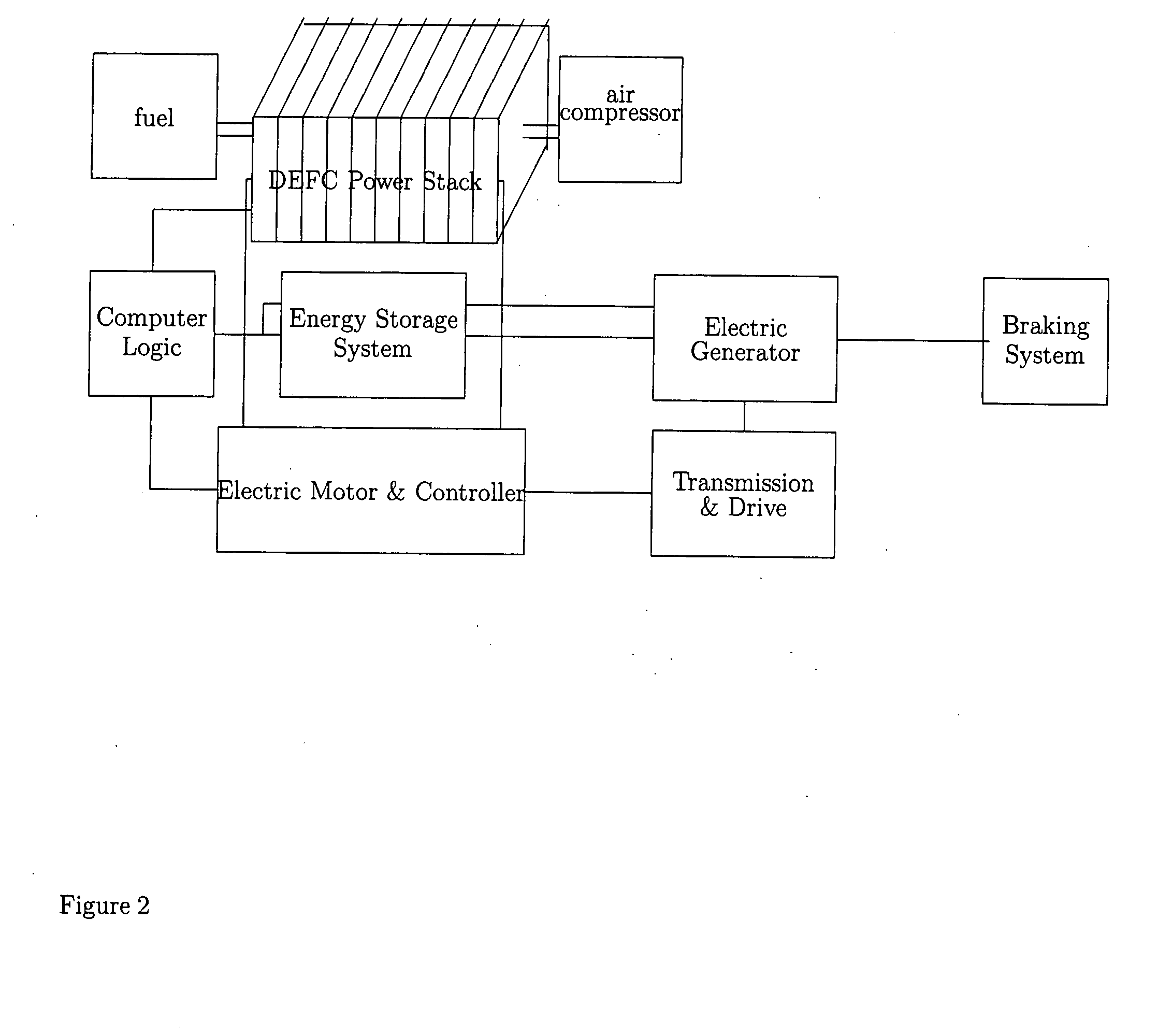High-grade ethanol vehicle with fuel-cell motors and optional flexible-fuel engine
- Summary
- Abstract
- Description
- Claims
- Application Information
AI Technical Summary
Benefits of technology
Problems solved by technology
Method used
Image
Examples
example 1
DEFC Motor and Flexible-Fuel Engine Fueled Separately from the Same Tank According to the Present Invention
[0024]This version has a common fuel tank for high-grade ethanol either for the flexible-fuel engine or for the DEFC-powered motor. It typically (but not necessarily) uses a shutter that is closed on one side of the tank when the other side is open. An auxillary tank to the flexible-fuel engine can be used for lower-grade mixtures of ethanol and / or gasoline specificaly for the engine, such as at times when high-grade ethanol is not available. The flexible-fuel engine uses sensors from either tank to detect the concentration of ethanol in the fuel to the engine, from which the Engine Control Unit regulates timing for the engine's fuel injectors and spark plugs. [See FIG. 3.]
[0025]Each of the 2 entities (engine and electric motor) has its own transmission (not shown), and each of these transmissions can control 1-or-more axle(s) of the vehicle. As an example, either transmission ...
example 2
DEFC Motor and Flexible-Fuel Engine Fueled from 2 Separate Tanks According to the Present Invention
[0027]This version has separate fuel tanks fueling the flexible-fuel engine and the DEFC-powered motor. The engine fuel tank can process any combination mixture of gasoline and ethanol, whereas the DEFC-powered motor fuel tank generally uses high-grade ethanol. Like Preferred Embodiment 1, the flexible-fuel engine uses a sensor from its tank to detect the concentration of ethanol in the fuel to the engine, from which the Engine Control Unit regulates timing for the engine's fuel injectors and spark plugs. [See FIG. 4]
[0028]Like Preferred Embodiment 1, each of the 2 entities (engine and electric motor) has its own transmission (not shown), and each of these transmissions can control 1-or-more axle(s) of the vehicle. For example, either transmission can engage both axle(s) (4-wheels) in a 4-wheel vehicle. Note also that one restriction is lifted from Preferred Embodiment 1 in Preferred E...
example 3
2 DEFC Motors Both Fueled from 1 Tank According to the Present Invention
[0029]This version has a common fuel tank for high-grade ethanol for either of the 2 DEFC-powered motors. Preferred Embodiment 3 of this invention has 2 fuel-cell motors run directly with high-grade ethanol from a common fuel tank, with variations of this form using separate fuel tanks for the 2 motors. The vehicle operates on only one DEFC-powered motor at a time, and will typically (but not necessarily) use shutters that are closed on one side of the tank when the other side is open. This embodiment comprises the first hybrid allowing a (DEFC-powered) motor to run 1-or-more axle(s) (e.g. the front-wheel drive of a 4-wheel vehicle), a back-up motor to run 1-or-more separate axle(s) (e.g. the back-wheel drive of a 4-wheel vehicle), and transmission to engage either drive into 4-wheel mode through a powertrain connecting the axles. The advantage of having 2 motors is that when the DEFC-powered motor that is in us...
PUM
 Login to View More
Login to View More Abstract
Description
Claims
Application Information
 Login to View More
Login to View More - R&D
- Intellectual Property
- Life Sciences
- Materials
- Tech Scout
- Unparalleled Data Quality
- Higher Quality Content
- 60% Fewer Hallucinations
Browse by: Latest US Patents, China's latest patents, Technical Efficacy Thesaurus, Application Domain, Technology Topic, Popular Technical Reports.
© 2025 PatSnap. All rights reserved.Legal|Privacy policy|Modern Slavery Act Transparency Statement|Sitemap|About US| Contact US: help@patsnap.com



